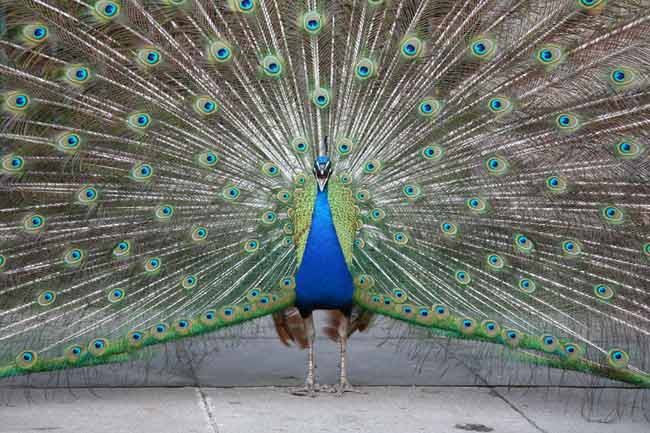How Peacocks Got Their Colorful Tails

The male peacock's tail was a vexing problem for the father of evolutionary theory, Charles Darwin, who struggled to explain why the bird should have such a seemingly burdensome trait. Darwin finally struck upon the idea of sexual selection, which posits that extravagant traits like the peacock's colorful fan of feathers provided an advantage in the competition for mates that outweighed other disadvantages. Biologists think that certain physical characteristics are signals to potential mates that the individual they're scoping out is healthy and vigorous; the process even works in humans, who are attracted to symmetrical faces and other outward signs of fitness. Some researchers are now turning their attention from why showy traits evolved, to how they evolved and why they tend to do so more often in males. To help answer these questions, scientists at the University of Wisconsin-Madison studied fruit fly derrieres and found that ancient genetic switches have evolved to manipulate the appearance of animals in a way that favored their selection as mates, providing a possible explanation for how peacocks evolved their spectacular tails. A genetic switch To get at the answer of how and why males developed these traits, the researchers studied the molecular details of a simple genetic switch that controls decorative traits in male fruit flies and how that switch evolved. Male fruit flies have more colorful derrieres than females. Traits like this that are peculiar to one sex or the other but are not part of the actual reproductive organs are called secondary sexual characteristics. The question of why secondary sexual characteristics exist is a major one in modern evolutionary biology. "Males and females basically have the same set of genes, so how do you specifically modify the activity of a male's genes but not a female's genes?" said study team member Thomas Williams, a UW-Madison postdoctoral fellow. The study, detailed in the Aug. 22 issue of the journal Cell, found that the genetic repression of a particular protein in the male fruit fly permits it to color the tail end of its abdomen and that the same repression seems not to happen in females. The research was supported by the National Institutes of Health, Human Frontiers Science Program, and the Howard Hughes Medical Institute. Boys only The genetic switch that controls the expression of the protein is ancient, the researchers noted, and originally evolved for an entirely different purpose. But over time, mutations accumulated that drove the evolution of male flies with more colorful behinds, perhaps in response to sexual selection. "Evolution is a cumulative process," explained study leader Sean Carroll. "You have this machinery and it's easy to add a bell or a whistle. With this particular trait, it evolved by exploiting (genetic) information that was already there to make male bodies different from female bodies." The ornamentation process never occurred in females, the study found, and was subsequently repressed. The male-specific traits could have evolved with the changing preferences of females. "These are the most rapidly evolving traits in evolution," Carroll said. "If female tastes change, these traits go away. There is no reinforcement." And as long as the gain in attracting the ladies outweighs any costs, the feature will survive, Carroll added. Carroll and Williams suggest that this same process can be extended to other animals, from beetles to fish to humans. It could explain why the bull moose has such an impressive set of antlers, why male lions have their shaggy manes and, yes, why male peacocks have that colorful array of feathers.
- Video: Sex and the Senses
- Amazing Things You Didn't Know About Animals
- The Rules of Attraction in the Game of Love
Sign up for the Live Science daily newsletter now
Get the world’s most fascinating discoveries delivered straight to your inbox.

Andrea Thompson is an associate editor at Scientific American, where she covers sustainability, energy and the environment. Prior to that, she was a senior writer covering climate science at Climate Central and a reporter and editor at Live Science, where she primarily covered Earth science and the environment. She holds a graduate degree in science health and environmental reporting from New York University, as well as a bachelor of science and and masters of science in atmospheric chemistry from the Georgia Institute of Technology.









